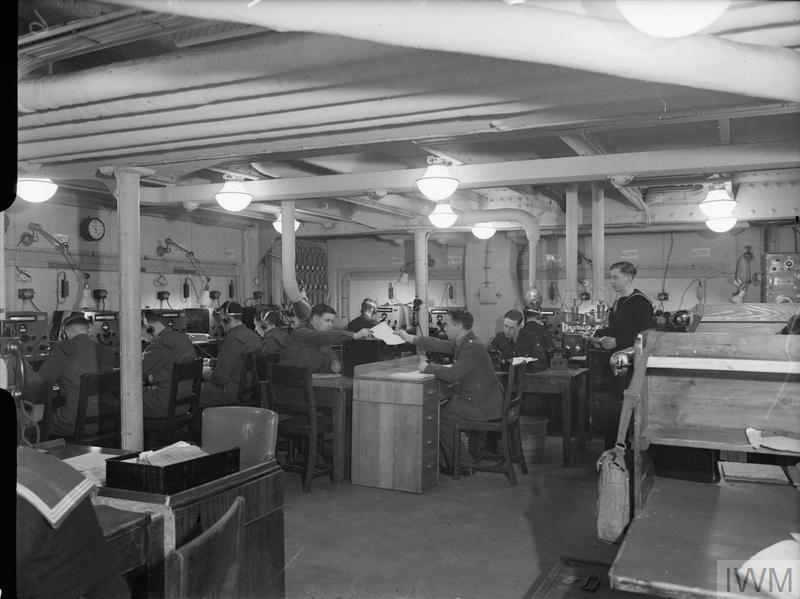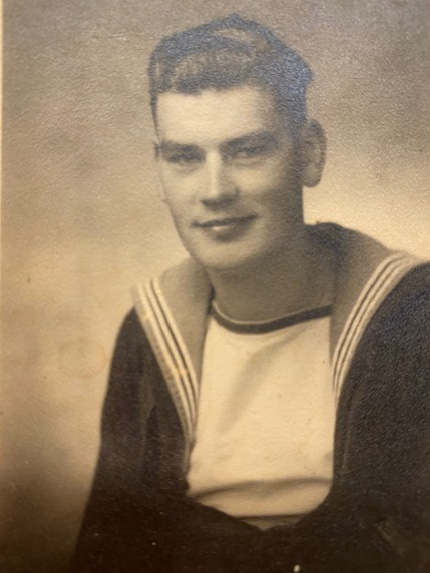Thomas Henry Bartlett
Thomas Bartlett was a radar operator on HMS Bulolo, Communications Headquarters ship for Gold Beach.
Bulolo arrived off the coast of Normandy at 05.56 hours on 6th June 1944 where she stayed until 27th June, having suffered bomb damage and been rammed by other vessels. She arrived in Southampton on 28th June, 2 days shy of Thomas’ 21st birthday.
He tells his own story in an interview with the Imperial War Museum. Catalogue number 27181.
The following is taken from an audio of Thomas in an interview on the Imperial War Museum archive – the undernoted is not the Imperial War Museum’s content moreover an interpretation of the audio file – which can be found here /https://www.iwm.org.uk/collections/item/object/80024618
Seaman who served as radar operator with HMS Bulolo in Mediterranean and English Channel during landings in Normandy, France, 6/1942-7/1944
Personal Background and Enlistment (1923–1942)
Thomas grew up in Gloucestershire between the two World Wars, with details about their family life, early education, and what motivated him to join the Royal Navy in 1941. Although originally working in a protected role in the aircraft industry, he chose to enlist voluntarily.
In 1942, Thomas underwent a selection process and began his naval training. This included initial instruction at HMS King Alfred in Skegness, followed by more advanced radar training at HMS Valkyrie on the Isle of Man. Once qualified, he was assigned to Devonport to await deployment.
Service During the War (1942–1945)
Deployment to North Africa and the Mediterranean
Assigned to HMS Bulolo, a naval command ship, the participated in Operation Torch in late 1942. The ship sailed from the River Clyde to Oran in Algeria, where it came under aerial attack. Later, while in Algiers, the vessel sustained further damage, and the crew encountered some hostility from the local French population. They also experienced the sombre task of burying fallen comrades at sea.
Following this campaign, the ship returned briefly to the UK before setting out again—this time sailing via South Africa to Egypt. In mid-1943, they were involved in the Allied landings in Italy, eventually reaching Naples and later participating in the landings at Anzio in early 1944.
Normandy Landings
In June 1944, HMS Bulolo was again active—this time as a headquarters vessel for the D-Day landings in Normandy. The crew departed from Southampton, and they had the opportunity to observe the vast build-up of Allied forces. Improvements in radar systems were noted, and some high-ranking visitors came aboard just before the operation. On D-Day, the ship came under enemy fire, and the chaos of the landings was clearly felt by those on board.
Anecdotes from this time include a humorous incident involving a radar officer, as well as reflections on the unique role the ship played in coordinating operations.
Shore-Based Radar Duties
Following the landings Thomas returned to Britain and spent the latter part of the war working in radar training and maintenance ashore, he also assisted in coaling ships at Devonport, a physically demanding task.


